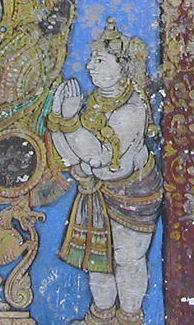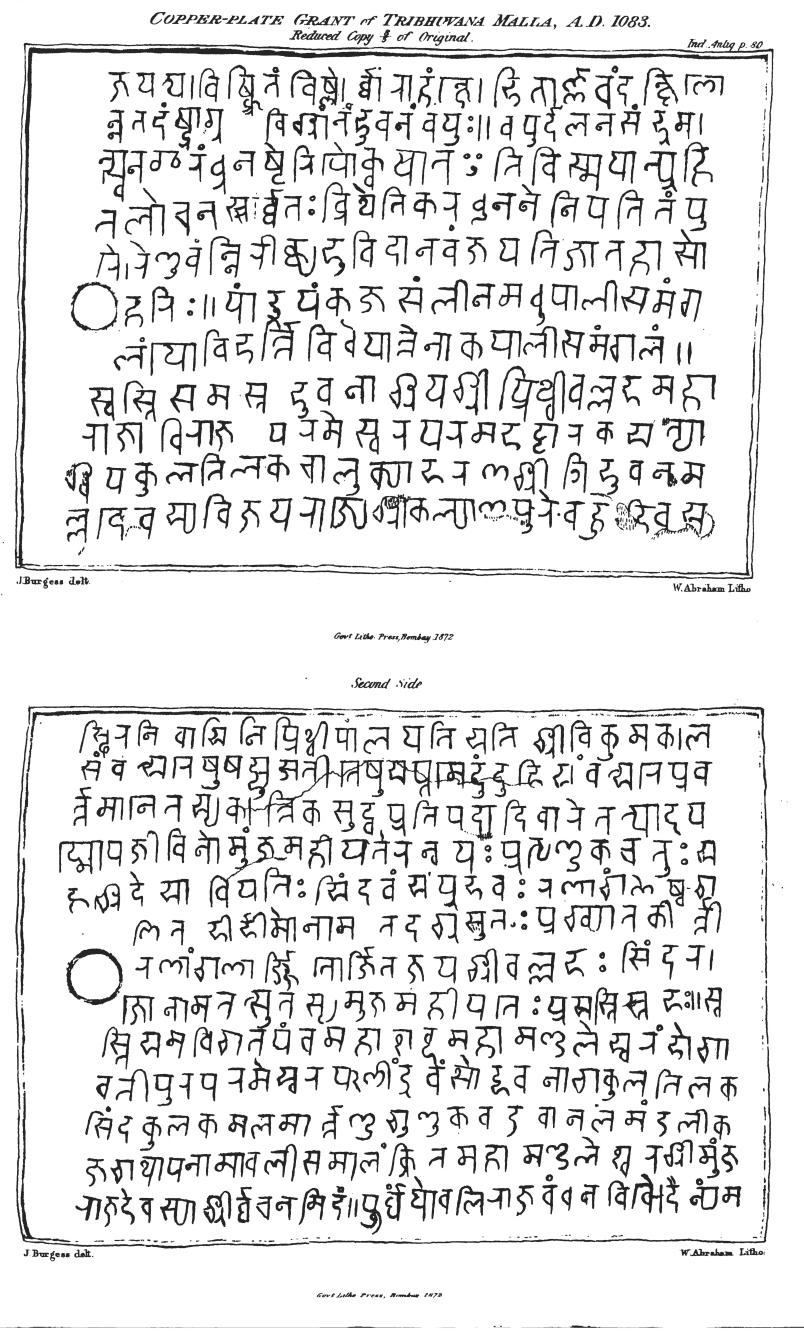 |
Narada
Narada ( sa, नारद, ), or Narada Muni, is a sage divinity, famous in Hindu traditions as a travelling musician and storyteller, who carries news and enlightening wisdom. He is one of mind-created children of Brahma, the creator god. He appears in a number of Hindu texts, notably the Mahabharata, regaling Yudhishthira with the story of Prahalada and the Ramayana as well as tales in the Puranas. A common theme in Vaishnavism is the accompaniment of a number of lesser deities such as Narada to offer aid to Vishnu upon his descent to earth to combat the forces of evil, or enjoy a close view of epochal events. He is also referred to as ''Rishiraja'', meaning the king of all sages. He was gifted with the boon of knowledge regarding the past, present, and the future. Hinduism In Indian texts, Narada travels to distant worlds and realms (Sanskrit: ''lokas''). He is depicted carrying a khartal (musical instrument) and the veena, and is generally regarded as one of the great ... [...More Info...] [...Related Items...] OR: [Wikipedia] [Google] [Baidu] |
 |
Narada Bhakti Sutra
The ''Narada Bhakti Sutra'' ( IAST: ) is a well known sutra venerated within the traditions of Hinduism, reportedly spoken by the famous sage, Narada. The text details the process of devotion ( Bhakti), or Bhakti yoga and is thus of particular importance to many of the Bhakti movements within Hinduism. It has received particular attention among the Vaishnava traditions. Sanskrit scriptures often appear in variant editions which may show differences in organization and verse numbering. For example in the translation by Swami Prabhavananda there are eighty-four verses arranged in nine chapters, whereas in the Bhaktivedanta Book Trust translation by A. C. Bhaktivedanta Swami Prabhupada and his disciple Satsvarupa dasa the eighty-four verses are organised into five chapters. As organized by Swami Prabhavananda, the text covers the following subjects: *Chapter 1 (verses 1-6) provides a definition of bhakti. *Chapter 2 (verses 7-14) stresses the importance of renunciation and self-s ... [...More Info...] [...Related Items...] OR: [Wikipedia] [Google] [Baidu] |
|
Nāradasmṛti
is a part of the Dharmaśāstras, written about 2400 years ago in two recensions the south India Naradamanusamhita and Nepal, in Newari language that serves as a collection of legal maxims relating to the topic of dharma. This text is purely juridical in character in that it focuses solely on procedural and substantive law. Known as the "juridical text par excellence," the is the only Dharmaśāstra text to not cover areas such as righteous conduct and penance.Lariviere 1989: ix Its focused nature has made the text highly valued by rulers and their governments, in Indian subcontinent and southeast Asia, likely as an aid of carrying out their dharma of justly ruling the country. Recensions Today there exist three recognized versions of Naradasmriti, also called Naradiya Dharmasastra. First, there is the “minor” recension, consisting of 879 verses and referred to by the siglum D. Next comes the recension known by the siglum P and consisting originally of 550 verses. Jolly ... [...More Info...] [...Related Items...] OR: [Wikipedia] [Google] [Baidu] |
|
|
Vishnu
Vishnu ( ; , ), also known as Narayana and Hari, is one of the principal deities of Hinduism. He is the supreme being within Vaishnavism, one of the major traditions within contemporary Hinduism. Vishnu is known as "The Preserver" within the Trimurti, the triple deity of supreme divinity that includes Brahma and Shiva. Gavin Flood, An Introduction to Hinduism' (1996), p. 17. In Vaishnavism, Vishnu is the supreme being who creates, protects, and transforms the universe. In the Shaktism tradition, the Goddess, or Adi Shakti, is described as the supreme Para Brahman, yet Vishnu is revered along with Shiva and Brahma. Tridevi is stated to be the energy and creative power ( Shakti) of each, with Lakshmi being the equal complementary partner of Vishnu. He is one of the five equivalent deities in Panchayatana puja of the Smarta tradition of Hinduism. According to Vaishnavism, the highest form of Ishvara is with qualities ( Saguna), and have certain form, but is limit ... [...More Info...] [...Related Items...] OR: [Wikipedia] [Google] [Baidu] |
|
 |
Narada Purana
The ''Naradiya Purana'' ( sa, नारदीय पुराण, ) or ''Narada Purana'' ( sa, नारद पुराण), are two Vaishnavism texts written in Sanskrit language. One of the text is termed as the Major Purana, also called Mahapurana while the other is termed as a Minor Purana (''Upapurana''), also referred as ''Brihannaradiya Purana.'' Unlike most Puranas that are encyclopedic, the Brihannaradiya text is focussed almost entirely on Vishnu worship, while the Naradiya text is a compilation of 41 chapters (20%) on Vishnu Worship and rest of the chapters (80%) cover a wide range of topics including a large compilation of ''Mahatmya'' (travel guides) to temples and places along river Ganga and neighbouring regions. The ''Naradiya Purana'' is notable for dedicating eighteen chapters on other Puranas, one entire chapter summarizing each major Purana. It is also notable for its verses extolling Buddha in chapter 1.2. History Manuscripts of nearly all the Major ... [...More Info...] [...Related Items...] OR: [Wikipedia] [Google] [Baidu] |
.jpg) |
Bhakti
''Bhakti'' ( sa, भक्ति) literally means "attachment, participation, fondness for, homage, faith, love, devotion, worship, purity".See Monier-Williams, ''Sanskrit Dictionary'', 1899. It was originally used in Hinduism, referring to devotion and love for a personal god or a representational god by a devotee.Bhakti ''Encyclopædia Britannica'' (2009) In ancient texts such as the '''', the term simply means participation, devotion and love for any endeavor, while in the '''', it connotes one o ... [...More Info...] [...Related Items...] OR: [Wikipedia] [Google] [Baidu] |
 |
Prahlada
Prahlada () is an asura king in Hindu mythology. He is known for his staunch devotion towards the preserver deity, Vishnu. He appears in the narrative of Narasimha, the man-lion avatar of Vishnu, who rescues Prahlada by slaying his wicked father, Hiranyakashipu. Prahlada is described as a saintly boy, known for his innocence and bhakti to Vishnu. Despite the abusive nature of his father, Hiranyakashipu, he continues to worship Vishnu. He is considered to be a ''mahājana'', or great devotee, by followers of Vaishnava traditions. A treatise is accredited to him in the Bhagavata Purana, in which Prahlada describes the process of his loving worship towards Vishnu. The majority of stories in the Puranas regarding him are based on the activities of Prahlada as a young boy, and he is usually depicted as such in paintings and illustrations. Legend Prahlada was born to Kayadhu and Hiranyakashipu, an evil daitya king who had been granted a boon that he could not be killed off ... [...More Info...] [...Related Items...] OR: [Wikipedia] [Google] [Baidu] |
 |
Puranas
Purana (; sa, , '; literally meaning "ancient, old"Merriam-Webster's Encyclopedia of Literature (1995 Edition), Article on Puranas, , page 915) is a vast genre of Indian literature about a wide range of topics, particularly about legends and other traditional lore. The Puranas are known for the intricate layers of symbolism depicted within their stories. Composed originally in Sanskrit and in other Indian languages,John Cort (1993), Purana Perennis: Reciprocity and Transformation in Hindu and Jaina Texts (Editor: Wendy Doniger), State University of New York Press, , pages 185-204 several of these texts are named after major Hindu gods such as Vishnu, Shiva, Brahma, and Adi Shakti. The Puranic genre of literature is found in both Hinduism and Jainism. The Puranic literature is encyclopedic, and it includes diverse topics such as cosmogony, cosmology, genealogies of gods, goddesses, kings, heroes, sages, and demigods, folk tales, pilgrimages, temples, medicine, astronomy ... [...More Info...] [...Related Items...] OR: [Wikipedia] [Google] [Baidu] |
_Hindu_in_midst_of_puja_in_Himachal_Pradesh_India.jpg) |
Bhakti Yoga
Bhakti yoga ( sa, भक्ति योग), also called Bhakti marga (, literally the path of '' Bhakti''), is a spiritual path or spiritual practice within Hinduism focused on loving devotion towards any personal deity.Karen Pechelis (2014), The Embodiment of Bhakti, Oxford University Press, , pages 19-24 It is one of the three classical paths in Hinduism which lead to ''Moksha'', the other paths being Jnana yoga and Karma yoga. The tradition has ancient roots. Bhakti is mentioned in the '' Shvetashvatara Upanishad'' where it simply means participation, devotion and love for any endeavor. ''Bhakti yoga'' as one of three spiritual paths for salvation is discussed in depth by the '' Bhagavad Gita''. The personal god varies with the devotee.Bhakti Encyclopedia Britannica (2009)Karen Pechelis (2011), Bh ... [...More Info...] [...Related Items...] OR: [Wikipedia] [Google] [Baidu] |
|
Vaishnavism
Vaishnavism ( sa, वैष्णवसम्प्रदायः, Vaiṣṇavasampradāyaḥ) is one of the major Hindu denominations along with Shaivism, Shaktism, and Smartism. It is also called Vishnuism since it considers Vishnu as the sole Para Brahman, supreme being leading all other Hindu deities, i.e. ''Mahavishnu''. Its followers are called Vaishnavites or ''Vaishnava''s (), and it includes sub-sects like Krishnaism and Ramaism, which consider Krishna and Rama as the supreme beings respectively. According to a 2010 estimate by Johnson and Grim, Vaishnavism is the largest Hindu sect, constituting about 641 million or 67.6% of Hindus. The ancient emergence of Vaishnavism is unclear, and broadly hypothesized as a History of Hinduism, fusion of various regional non-Vedic religions with Vishnu. A merger of several popular non-Vedic theistic traditions, particularly the Bhagavata cults of Vāsudeva, Vāsudeva-krishna and ''Gopala-Krishna, Gopala-Krishna'', and Narayana, ... [...More Info...] [...Related Items...] OR: [Wikipedia] [Google] [Baidu] |
|
 |
Veena
The ''veena'', also spelled ''vina'' ( sa, वीणा IAST: vīṇā), comprises various chordophone instruments from the Indian subcontinent. Ancient musical instruments evolved into many variations, such as lutes, zithers and arched harps.Vina: Musical Instrument Encyclopædia Britannica (2010) The many regional designs have different names such as the '' Rudra veena'', the '''', the '''' and others. The North Indian ''rudra veena'', u ... [...More Info...] [...Related Items...] OR: [Wikipedia] [Google] [Baidu] |
 |
Dharmaśāstra
''Dharmaśāstra'' ( sa, धर्मशास्त्र) is a genre of Sanskrit texts on law and conduct, and refers to the treatises ( śāstras) on dharma. Unlike Dharmasūtra which are based upon Vedas, these texts are mainly based on Puranas. There are many Dharmashastras, variously estimated to be 18 to about 100, with different and conflicting points of view. Each of these texts exist in many different versions, and each is rooted in Dharmasutra texts dated to 1st millennium BCE that emerged from Kalpa (Vedanga) studies in the Vedic era. The textual corpus of Dharmaśāstra were composed in poetic verses, are part of the Hindu Smritis, constituting divergent commentaries and treatises on duties, responsibilities and ethics to oneself, to family and as a member of society. The texts include discussion of ashrama (stages of life), varna (social classes), purushartha (proper goals of life), personal virtues and duties such as ahimsa (non-violence) against all living be ... [...More Info...] [...Related Items...] OR: [Wikipedia] [Google] [Baidu] |
 |
Veena
The ''veena'', also spelled ''vina'' ( sa, वीणा IAST: vīṇā), comprises various chordophone instruments from the Indian subcontinent. Ancient musical instruments evolved into many variations, such as lutes, zithers and arched harps.Vina: Musical Instrument Encyclopædia Britannica (2010) The many regional designs have different names such as the '' Rudra veena'', the '''', the '''' and others. The North Indian ''rudra veena'', u ... [...More Info...] [...Related Items...] OR: [Wikipedia] [Google] [Baidu] |